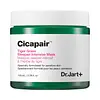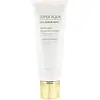What's inside
What's inside
 Key Ingredients
Key Ingredients

 Benefits
Benefits

 Concerns
Concerns

 Ingredients Side-by-side
Ingredients Side-by-side

Water
Skin ConditioningDipropylene Glycol
HumectantPropanediol
SolventGlycerin
HumectantCaprylyl Methicone
Skin Conditioning1,2-Hexanediol
Skin ConditioningNiacinamide
SmoothingTrehalose
HumectantVinyl Dimethicone
Butylene Glycol
HumectantEryngium Maritimum Callus Culture Filtrate
Skin ConditioningFusidium Coccineum Ferment Filtrate
Skin ConditioningCetyl Dimethicone
EmollientHouttuynia Cordata Extract
Skin ConditioningIlex Aquifolium Leaf Extract
Skin ConditioningDimethiconol
EmollientChondrus Crispus Extract
Skin ConditioningAchillea Millefolium Oil
CleansingAmmonium Acryloyldimethyltaurate/Vp Copolymer
Acrylates/C10-30 Alkyl Acrylate Crosspolymer
Emulsion StabilisingDehydroxanthan Gum
Emulsion StabilisingPolyvinyl Alcohol
Saccharum Officinarum Extract
MoisturisingTromethamine
BufferingCaprylyl Glycol
EmollientSodium Acrylate/Sodium Acryloyldimethyl Taurate Copolymer
Emulsion StabilisingPolyisobutene
Coconut Oil Methylpropanediol Esters
EmollientAdenosine
Skin ConditioningMelia Azadirachta Leaf Extract
Skin ConditioningMelia Azadirachta Flower Extract
Skin ConditioningDisodium EDTA
Caprylyl/Capryl Glucoside
CleansingPanthenol
Skin ConditioningSorbitan Oleate
EmulsifyingBamboo Vinegar
AntimicrobialGlycine Soja Peptide
Skin ConditioningStreptococcus Thermophilus Ferment
HumectantMadecassoside
AntioxidantEthylhexylglycerin
Skin ConditioningCoccinia Indica Fruit Extract
Skin ConditioningCurcuma Longa Root Extract
MaskingOcimum Sanctum Leaf Extract
Skin ConditioningAmber Powder
Solanum Melongena Fruit Extract
Skin ConditioningHedera Helix Extract
AntimicrobialDextrin
AbsorbentTheobroma Cacao Seed Extract
AntioxidantCorallina Officinalis Extract
Skin ConditioningMoringa Oleifera Seed Oil
EmollientAsiaticoside
AntioxidantCentella Asiatica Leaf Extract
Skin ConditioningAsiatic Acid
Skin ConditioningMadecassic Acid
Skin ConditioningCalcium Chloride
AstringentCentella Asiatica Extract
CleansingMagnesium Sulfate
Water, Dipropylene Glycol, Propanediol, Glycerin, Caprylyl Methicone, 1,2-Hexanediol, Niacinamide, Trehalose, Vinyl Dimethicone, Butylene Glycol, Eryngium Maritimum Callus Culture Filtrate, Fusidium Coccineum Ferment Filtrate, Cetyl Dimethicone, Houttuynia Cordata Extract, Ilex Aquifolium Leaf Extract, Dimethiconol, Chondrus Crispus Extract, Achillea Millefolium Oil, Ammonium Acryloyldimethyltaurate/Vp Copolymer, Acrylates/C10-30 Alkyl Acrylate Crosspolymer, Dehydroxanthan Gum, Polyvinyl Alcohol, Saccharum Officinarum Extract, Tromethamine, Caprylyl Glycol, Sodium Acrylate/Sodium Acryloyldimethyl Taurate Copolymer, Polyisobutene, Coconut Oil Methylpropanediol Esters, Adenosine, Melia Azadirachta Leaf Extract, Melia Azadirachta Flower Extract, Disodium EDTA, Caprylyl/Capryl Glucoside, Panthenol, Sorbitan Oleate, Bamboo Vinegar, Glycine Soja Peptide, Streptococcus Thermophilus Ferment, Madecassoside, Ethylhexylglycerin, Coccinia Indica Fruit Extract, Curcuma Longa Root Extract, Ocimum Sanctum Leaf Extract, Amber Powder, Solanum Melongena Fruit Extract, Hedera Helix Extract, Dextrin, Theobroma Cacao Seed Extract, Corallina Officinalis Extract, Moringa Oleifera Seed Oil, Asiaticoside, Centella Asiatica Leaf Extract, Asiatic Acid, Madecassic Acid, Calcium Chloride, Centella Asiatica Extract, Magnesium Sulfate
Chamaecyparis Obtusa Water
MaskingSnail Secretion Filtrate
Skin ConditioningGlycerin
HumectantButylene Glycol
HumectantCaprylic/Capric Triglyceride
MaskingBehenyl Alcohol
EmollientAdansonia Digitata Seed Extract
Skin ConditioningCetearyl Alcohol
EmollientSucrose Polystearate
EmollientSodium Polyacrylate
AbsorbentCaprylyl Glycol
EmollientEthylhexylglycerin
Skin ConditioningSorbitol
HumectantHydrogenated Polyisobutene
EmollientParfum
MaskingHydroxypropyl Cyclodextrin
MaskingTocopheryl Acetate
AntioxidantDisodium EDTA
Centella Asiatica Meristem Cell Culture
AntioxidantXanthan Gum
EmulsifyingChamaecyparis Obtusa Water, Snail Secretion Filtrate, Glycerin, Butylene Glycol, Caprylic/Capric Triglyceride, Behenyl Alcohol, Adansonia Digitata Seed Extract, Cetearyl Alcohol, Sucrose Polystearate, Sodium Polyacrylate, Caprylyl Glycol, Ethylhexylglycerin, Sorbitol, Hydrogenated Polyisobutene, Parfum, Hydroxypropyl Cyclodextrin, Tocopheryl Acetate, Disodium EDTA, Centella Asiatica Meristem Cell Culture, Xanthan Gum
 Reviews
Reviews

Ingredients Explained
These ingredients are found in both products.
Ingredients higher up in an ingredient list are typically present in a larger amount.
Butylene Glycol (or BG) is used within cosmetic products for a few different reasons:
Overall, Butylene Glycol is a safe and well-rounded ingredient that works well with other ingredients.
Though this ingredient works well with most skin types, some people with sensitive skin may experience a reaction such as allergic rashes, closed comedones, or itchiness.
Learn more about Butylene GlycolCaprylyl Glycol is a humectant and emollient, meaning it attracts and preserves moisture.
It is a common ingredient in many products, especially those designed to hydrate skin. The primary benefits are retaining moisture, skin softening, and promoting a healthy skin barrier.
Though Caprylyl Glycol is an alcohol derived from fatty acids, it is not the kind that can dry out skin.
This ingredient is also used as a preservative to extend the life of products. It has slight antimicrobial properties.
Learn more about Caprylyl GlycolDisodium EDTA plays a role in making products more stable by aiding other preservatives.
It is a chelating agent, meaning it neutralizes metal ions that may be found in a product.
Disodium EDTA is a salt of edetic acid and is found to be safe in cosmetic ingredients.
Learn more about Disodium EDTAEthylhexylglycerin (we can't pronounce this either) is commonly used as a preservative and skin softener. It is derived from glyceryl.
You might see Ethylhexylglycerin often paired with other preservatives such as phenoxyethanol. Ethylhexylglycerin has been found to increase the effectiveness of these other preservatives.
Glycerin is already naturally found in your skin. It helps moisturize and protect your skin.
A study from 2016 found glycerin to be more effective as a humectant than AHAs and hyaluronic acid.
As a humectant, it helps the skin stay hydrated by pulling moisture to your skin. The low molecular weight of glycerin allows it to pull moisture into the deeper layers of your skin.
Hydrated skin improves your skin barrier; Your skin barrier helps protect against irritants and bacteria.
Glycerin has also been found to have antimicrobial and antiviral properties. Due to these properties, glycerin is often used in wound and burn treatments.
In cosmetics, glycerin is usually derived from plants such as soybean or palm. However, it can also be sourced from animals, such as tallow or animal fat.
This ingredient is organic, colorless, odorless, and non-toxic.
Glycerin is the name for this ingredient in American English. British English uses Glycerol/Glycerine.
Learn more about Glycerin